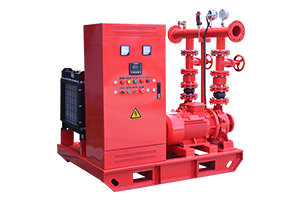Installation of diesel engine fire pump
The installation of a diesel engine fire pump is a critical component of a fire protection system, and it must be done in accordance with local building codes, industry standards, and the manufacturer's recommendations. Below are the general steps involved in installing a diesel engine fire pump:
-
Design and Planning:
- Consult with a qualified fire protection engineer to determine the appropriate size and capacity of the fire pump based on the specific needs of the building or facility.
- Choose the location for the fire pump room, ensuring it meets regulatory requirements regarding accessibility, ventilation, and separation from other building spaces.
-
Obtain Necessary Permits:
- Contact your local building department to obtain the required permits for the installation of a fire pump. Compliance with local codes and regulations is essential.
-
Select the Fire Pump:
- Choose a fire pump that meets the design specifications and requirements of the project. Ensure that it is listed and approved by relevant authorities and that it is compatible with the diesel engine.
-
Installation of the Diesel Engine Fire Pump:
- Place the fire pump on a solid, level foundation that is designed to handle the weight and vibration of the pump. The foundation should meet local building codes.
- Install the diesel engine and the fire pump on the foundation according to the manufacturer's recommendations and design specifications.
- Ensure that there is adequate space around the fire pump for maintenance and inspection.
-
Piping and Connections:
- Install the necessary piping to connect the fire pump to the water supply and the fire protection system, including the inlet and outlet piping, check valves, and gate valves.
- Use appropriate materials, such as ductile iron, for the piping to ensure its durability and resistance to corrosion.
-
Electrical and Fuel Supply:
- Connect the diesel engine to the electrical system, including the necessary wiring and controls.
- Ensure that there is a reliable and adequate fuel supply for the diesel engine. This may involve installing a fuel tank and fuel transfer systems.
-
Ventilation and Cooling:
- Provide adequate ventilation to the fire pump room to dissipate heat and fumes generated by the diesel engine.
- Install a cooling system to prevent overheating of the engine during operation.
-
Compliance and Testing:
- Conduct tests and inspections to ensure that the fire pump is functioning correctly and in compliance with local regulations and industry standards.
- Perform regular maintenance and testing in accordance with the manufacturer's recommendations and regulatory requirements.
-
Training:
- Train personnel responsible for operating and maintaining the diesel engine fire pump, including emergency shutdown procedures and routine maintenance.
-
Documentation:
- Keep thorough records of the installation process, including plans, permits, inspection reports, and maintenance logs.
It is important to consult with experts in fire protection and comply with local codes and regulations during the installation of a diesel engine fire pump to ensure its reliability and effectiveness in case of a fire emergency.







